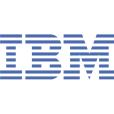 IBM has just announced the second strand in its strategy for simplifying data warehousing. It contends, rightly, that deploying and managing an enterprise data warehouse is horrendously complicated. Moreover, those complications directly drive costs up. So, it is simplifying the data warehouse and driving costs down.
IBM has just announced the second strand in its strategy for simplifying data warehousing. It contends, rightly, that deploying and managing an enterprise data warehouse is horrendously complicated. Moreover, those complications directly drive costs up. So, it is simplifying the data warehouse and driving costs down.The first strand in this strategy was last autumn, when IBM introduced the BCU (Balanced Configuration Unit). This is a combination of two things: first, it is a hardware platform that has been optimised to run DB2 along with best practices that IBM has learned over the years about partitioning, indexes, tuning, and so forth—all of these are pre-implemented for you within the BCU. We might call this a hemi-appliance in the sense that while a good deal of tuning and optimisation has been undertaken; it isn’t a complete bi-lateral optimisation as you would get in a full-blown conventional data warehouse appliance.
Warehousing Edition, which is version 9.1 (presaging the forthcoming Viper release of DB2 UDB). The main theme of this release is, again, to simplify the environment for data warehousing administrators. The main way IBM has done this is by integrating a number of existing (and new) tools and bundling them together.
There will be two editions: the Base Edition will include Cube Views (which will no longer be available as a stand-alone option), Data Modelling (new, developed by the Rational group), OLAP modeling and the Integrated Installer, as well as the database itself. The Enterprise Edition will include all of this plus the Data Partitioning Feature, Query Patroller, Intelligent Miner (also no longer available as a separate product), Alphablox, a web-based Admin Console that spans all of the products in the suite, the Design Studio (which is an Eclipse-based design environment that includes the Data Flow and Data Mining Editors as well as the aforementioned Data and OLAP modeling), and the SQL Warehousing Tool (which allows you to build in-warehouse transformations).
Read the rest here

No comments:
Post a Comment